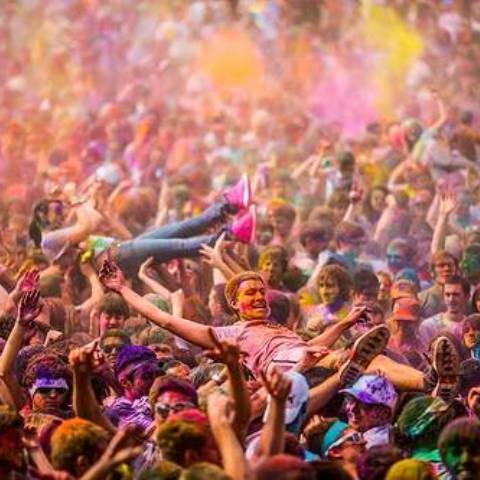

Of the numerous traditional festivals and holidays celebrated in India every year, Holi is the most boisterous and colorful of them all. Also known as the Festival of Colors, Holi is an ancient Hindu religious celebration that is observed primarily in India, as well as by Hindus all around the world.
In Holi just as in any other Hindu celebration, people carry on rituals as an essential part of any celebration or festival. Holi is celebrated over a period of two days, and takes place in late February or early March.
The festival signifies the victory of good over evil, the arrival of spring, end of winter, and for many, a festive day to meet others, play and laugh, forget and forgive. Hindus believe it is a time of enjoying spring's abundant colors, hence, they also call it the Festival of Colors.
The festival of Holi dates back to ancient times, and has been passed on from generation to generation in India, each upholding the traditions and values behind the celebration. The name of the festival derives from the wicked Holika. According to legend, an evil king had a good son, Prince Prahlad, who was sent by the gods to deliver the land from the king's cruelty. Holika, the king's sister, decided to kill the prince with fire. Believing she was immune to fire, she held the child in her lap and sat in flames. But Lord Krishna stepped in to save Prahlad, and Holika was left in the fire and burned to death. This is the legend that lives on through the first day of Holi every year.
A few days before the first day of Holi, known as Holika Dahan, families and friends begin gathering wood and other materials for a bonfire. A pyre is lit at sunset, and families and friends gather around watching until it stops burning. The burning pyre not only symbolizes the death of the evil Holika, but the ritual also signifies the victory of good over evil, a common theme in most Hindu festivals. As the night comes to a close, people get ready for the second day of festivities.
Most people are familiar with the second day of Holi, which is known as Dhuleti. The second day involves the color festival in which people of all ages chase each other with colored powder and water balloons filled with colored water. People run all over the streets smearing colored powder on their targets, and hurling water balloons filled with colored water. Everyone is fair game, so the few people that do not wish to get messy know to stay inside.
The color fight takes place everywhere, and the streets and buildings become colorful sights in a matter of just minutes. By the end of the day people are covered from head to toe in color. After a day of play with colors, everyone gets cleaned up and dressed in Indian traditional clothing, and go to visit family and friends. One of the most common customs is the exchange of Indian sweets. During this time with relatives and friends, people forgive each other and forget the hard times of the past, and look to strengthen the bonds with their loved ones in the spirit of Holi.
Holi holds tremendous significance for those who celebrate it, and Hindus cherish the reasons for its celebrations. It helps bring society together, and move on from the past. It is the most festive and joyous day of the year, and gives people a fresh start with a new sense of hope and happiness each year. The traditions and culture encompassing the festival will always live on through its rituals and celebrations.
As a part of a diverse community here at Darlington, Holi is just one of the many celebrations that our students celebrate throughout the year. Having opportunities to learn about the different celebrations from students around the world is just one of the unique, enriching experiences we have here in our Community.
Note: This blog is part of our new series, "Culture Corner," which celebrates the diversity of the Darlington Community.